Se um eletrodoméstico personifica a magia da panificação, é a batedeira de pé. É uma ferramenta poderosa que transforma ingredientes sem esforço em massa, massas e picos de chantilly. No entanto, os clientes querem uma batedeira que seja boa o suficiente para lidar com todas as receitas em seu repertório, de claras de ovos delicadas a massa de pizza densa, sem suar a camisa.
Então, os varejistas têm muito trabalho a fazer se quiserem atender a essa demanda. Mas por onde começar? Este guia explorará os principais recursos que tornam as batedeiras de bancada essenciais e o que os varejistas devem considerar antes de escolher modelos para suas prateleiras.
Conteúdo
O que são batedeiras e quais são os principais tipos?
Qual é o tamanho do mercado de batedeiras?
O que os varejistas devem considerar antes de estocar batedeiras?
Resumindo
O que são batedeiras e quais são os principais tipos?
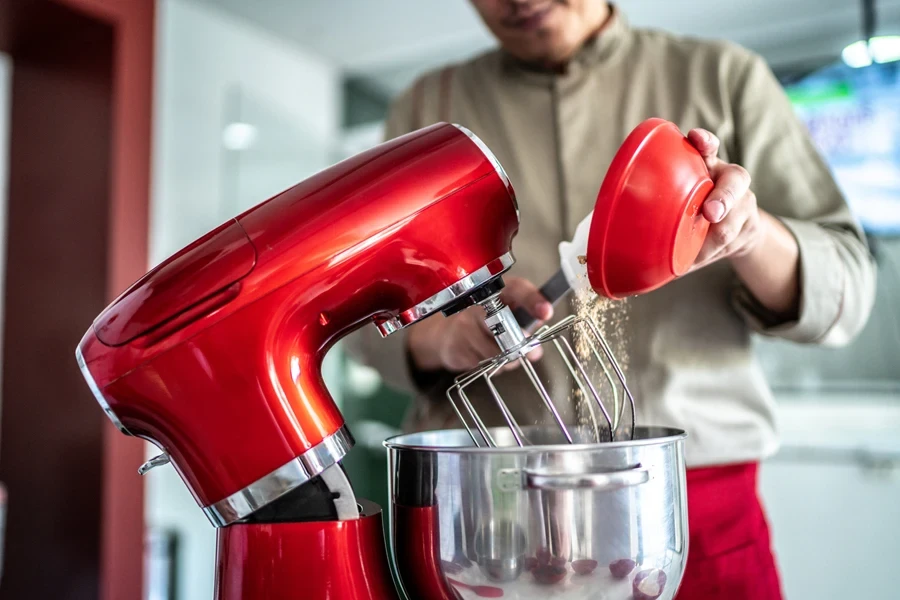
Batedeiras de pé são aparelhos de cozinha de alta potência projetados para tirar o trabalho pesado de assar e misturar. Ao contrário das batedeiras de mão, que exigem esforço manual, as batedeiras de pé operam sem as mãos, permitindo que os usuários se concentrem em outras tarefas enquanto a batedeira faz o trabalho.
Esse recurso os torna ideais para tudo, desde a culinária diária até projetos de panificação elaborados. Dois tipos principais dominam o mercado: misturadores de cabeça inclinada e misturadores de elevação de tigela. Modelos de cabeça inclinada tem uma cabeça que inclina para trás, permitindo fácil acesso à tigela e aos acessórios, como o gancho para massa e o batedor plano.
Eles são ótimos para padeiros caseiros que querem simplicidade e conveniência. Por outro lado, misturadores de elevação de tigela use uma alavanca para levantar e abaixar a tigela, proporcionando estabilidade extra e tornando-a ideal para uso pesado, como misturar grandes quantidades de massa densa.
Qual é o tamanho do mercado de batedeiras?
Com o aumento da panificação caseira impulsionada por programas de culinária e mídias sociais, a mercado de batedeiras está crescendo. De acordo com a pesquisa, o mercado global de batedeiras atingiu US$ 2.015 bilhões e atingirá US$ 2.994 bilhões até 2031 a uma taxa de crescimento anual composta (CAGR) de 5.07%.
O crescimento constante do mercado é resultado de consumidores buscando qualidade, versatilidade e durabilidade em utensílios de cozinha. À medida que a panificação cresce em popularidade, os varejistas que estocam batedeiras podem aproveitar essa demanda, atendendo a todos, desde padeiros iniciantes até desenvolvedores de receitas profissionais.
O que os varejistas devem considerar antes de estocar batedeiras?
1. Tamanho e capacidade
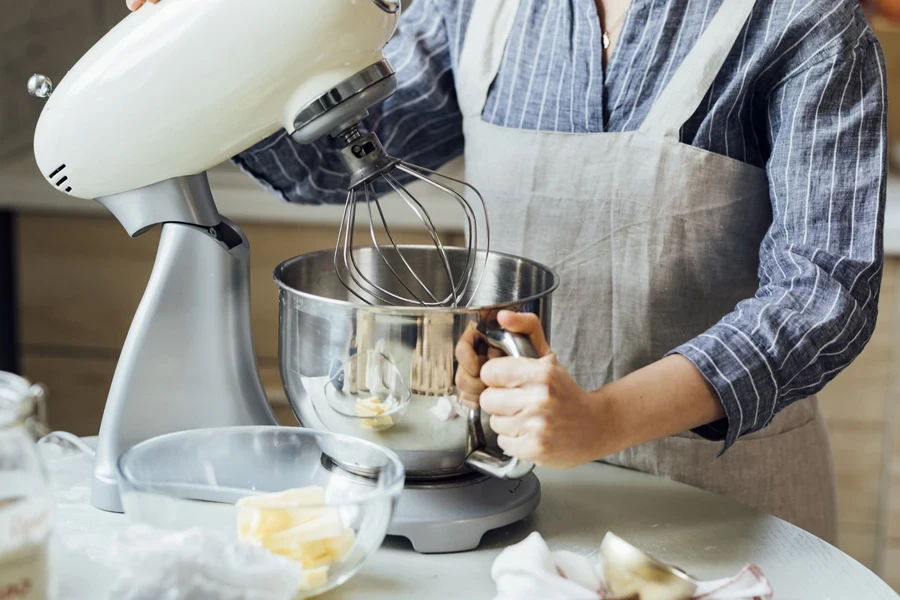
O tamanho é importante, especialmente em um batedeira. Ao escolher modelos para estocar, considere a variedade de tamanhos e capacidades de tigelas disponíveis. Misturadores menores com uma tigela de 3 ou 4 litros são perfeitos para necessidades leves de cozimento ou lares menores.
A Tigela de 5 litros atinge um ponto ideal, grande o suficiente para lidar com receitas de tamanho familiar sem ocupar muito espaço no balcão. No entanto, se a base de clientes inclui cozinheiros domésticos que adoram fazer porções duplas ou pães densos, modelos de 6 ou até 7 litros podem ser o caminho a seguir.
Pense desta forma: uma tigela menor pode ser ideal para alguém que ocasionalmente prepara uma massa de biscoito ou uma massa leve de bolo, mas para aqueles comprometidos em assar pão todo fim de semana, uma tigela maior vale seu peso em ouro.
2. Anexos
Um dos maiores pontos de venda de misturadores de suporte é sua versatilidade, graças a uma variedade de acessórios. Essas ferramentas permitem que os padeiros façam de tudo, desde amassar massa de pão até bater claras em neve com perfeição. A maioria dos mixers vem com acessórios básicos — um gancho de massa, um batedor e um batedor plano.
O Mercado Pago não havia executado campanhas de Performance anteriormente nessas plataformas. Alcançar uma campanha de sucesso exigiria modelos premium frequentemente incluem ou podem ser pareados com complementos que transformam o mixer em um eletrodoméstico multifuncional. Por exemplo, os mixers KitchenAid são famosos por sua ampla gama de acessórios, de rolos de macarrão a acessórios para fazer sorvete.
Ao adicionar batedeiras às prateleiras, destaque os acessórios disponíveis para mostrar o quão versáteis essas máquinas podem ser. Os clientes que querem experimentar receitas diferentes apreciarão a flexibilidade, enquanto outros podem encontrar paz de espírito sabendo que têm espaço para crescer com sua batedeira.
3. Poder
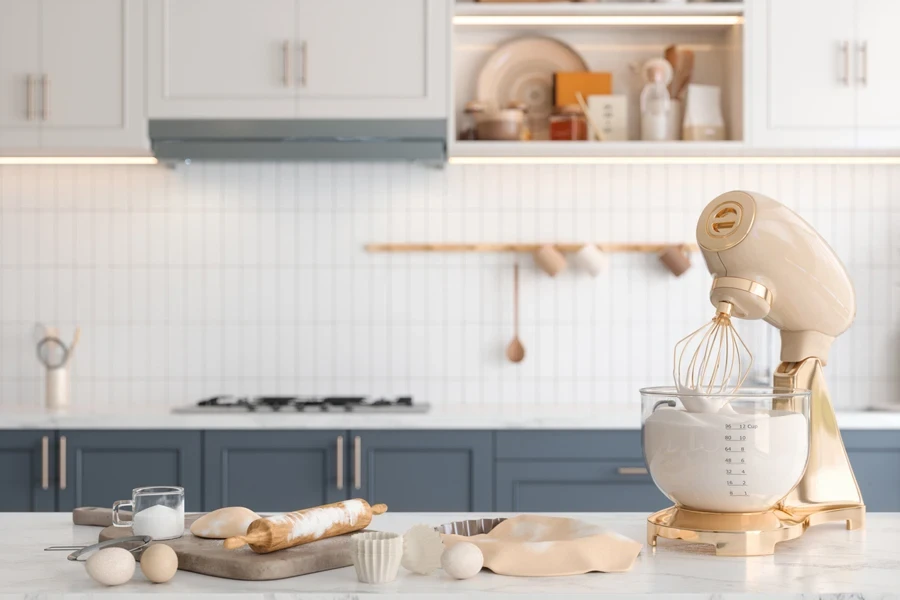
Potência é uma daquelas características que pode parecer técnica, mas faz uma grande diferença. Mesas de mistura geralmente variam de 250 a mais de 1000 watts, com potência mais alta se traduzindo em mais força e consistência. Por exemplo, motores de 325 watts são perfeitos para uso leve, enquanto qualquer coisa acima de 500 watts é melhor para mixagens mais pesadas.
Modelos como os mixers Bosch ou Ankarsrum são populares por seus motores potentes e lidam com grandes trabalhos sem problemas. Lembre-se de explicar essas diferenças aos clientes, especialmente aqueles que planejam usar seus mixers com frequência ou para assar em ambientes pesados.
4. Estabilidade
A misturador estável é um misturador seguro. Estabilidade pode não ser a primeira coisa que os clientes pensam, mas é vital — especialmente ao misturar em altas velocidades ou com ingredientes pesados. Ventosas na base ou um design sólido e equilibrado podem evitar que a máquina "caminhe" sobre o balcão. Os misturadores de cabeça inclinada, embora fáceis de usar, tendem a ser mais leves e podem exigir mais espaço no balcão para permanecerem estáveis, enquanto os modelos de elevação de tigela são geralmente mais pesados e resistentes.
5. Fácil de usar
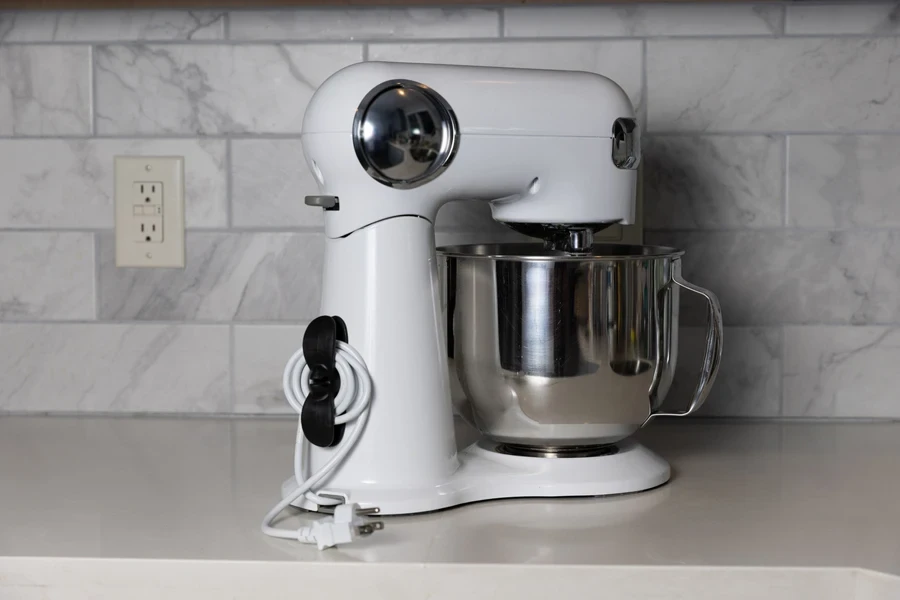
Alguns misturadores têm uma curva de aprendizado íngreme, enquanto outros são intuitivos desde o início. Os designs de cabeça inclinada, por exemplo, facilitam a troca de acessórios e o acesso à tigela, enquanto os modelos de elevação da tigela podem exigir que os usuários aprendam a prendê-las. Mais importante, as configurações de velocidade simples e a rotulagem clara nos mostradores são recursos essenciais que fazem com que o uso de uma batedeira de mesa pareça fácil.
Para quem é novo em misturadores de suporte, ter controles diretos e fácil acesso à tigela pode fazer uma grande diferença. Uma máquina que é fácil de limpar, simples de operar e intuitiva de manusear é uma maneira infalível de obter avaliações positivas.
Dica profissional: certifique-se de estocar batedeiras que atendam a diferentes níveis de conforto e informe quais modelos são adequados para iniciantes e aqueles projetados para quem faz pão profissionalmente.
6. Bloqueio da cabeça de potência
Um recurso de travamento da cabeça elétrica, especialmente em misturadores com cabeça inclinada, garante estabilidade enquanto o misturador funciona. Um misturador cabeça que trava no lugar previne movimento e respingos ao lidar com massas densas ou altas velocidades. É um daqueles recursos que podem parecer pequenos, mas são incrivelmente úteis durante o uso.
Imagine alguém misturando muita massa; a última coisa que eles querem é que a cabeça da batedeira salte para cima e para baixo ou saia do lugar. Modelos com um mecanismo de travamento confiável oferecem paz de espírito, especialmente para clientes que lidam com receitas mais pesadas.
7. Design e cor
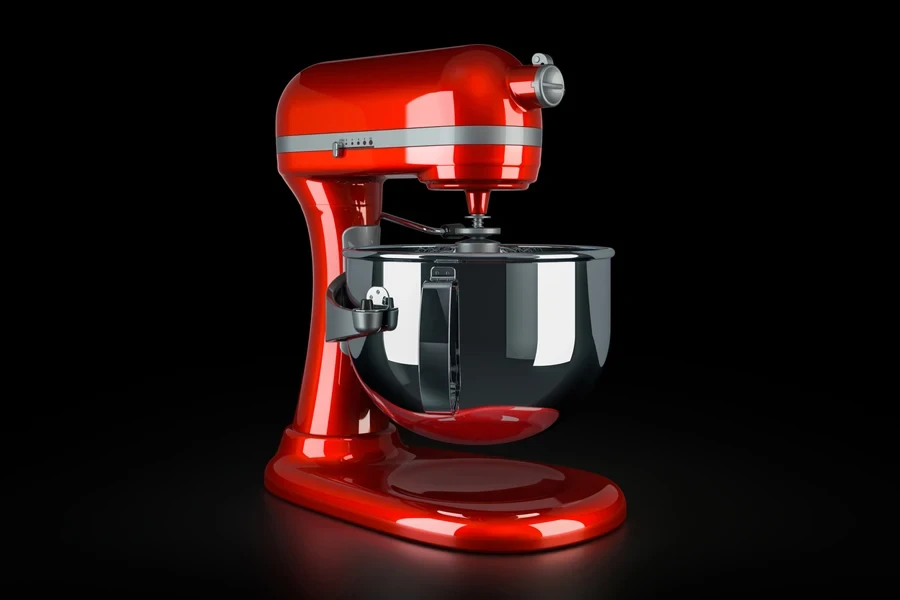
A estética desempenha um papel surpreendentemente importante na escolha de uma batedeira. Desde uma batedeira é um acessório permanente na maioria das bancadas de consumo, ele deve ter uma boa aparência. Siga o exemplo de marcas como KitchenAid e Breville. Elas oferecem misturadores em um arco-íris de cores, permitindo que os usuários escolham um tom que complemente a decoração da cozinha. Alguns clientes são atraídos pelo aço inoxidável clássico, enquanto outros podem optar por um vermelho forte ou azul pastel para fazer uma declaração.
Resumindo
Batedeiras de mesa são ferramentas de cozinha incríveis que podem lidar com várias tarefas de mistura. Todos as usam, desde padeiros novatos até profissionais experientes, pois essas ferramentas tornam a experiência de cozinhar mais fácil do que o trabalho manual.
Portanto, os varejistas devem considerar cuidadosamente vários fatores, incluindo capacidade, potência, acessórios, estabilidade e design, para garantir que eles estoquem batedeiras que os consumidores desejam para suas necessidades de cozimento. E como qualquer padeiro dirá, não há nada tão satisfatório quanto uma batedeira que trabalha tão duro quanto eles.
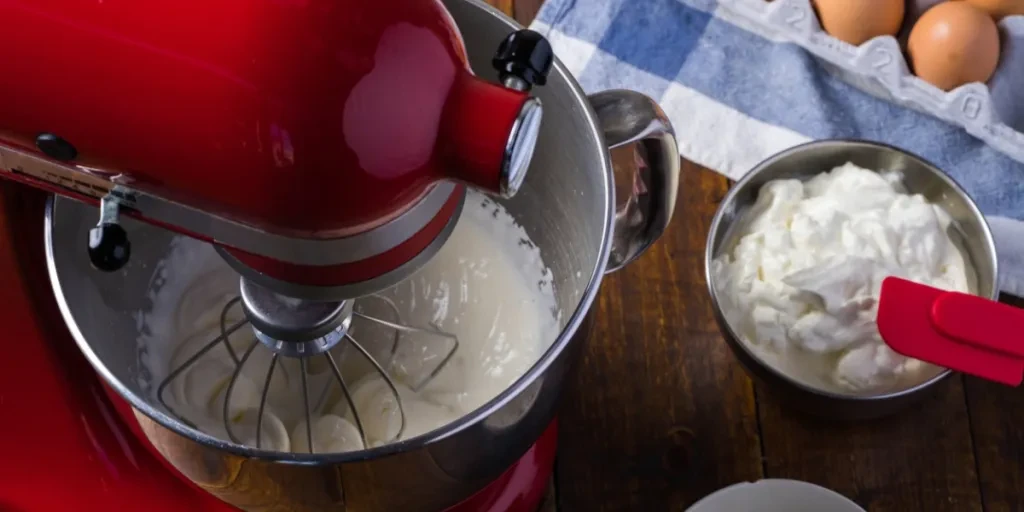




 বাংলা
বাংলা Nederlands
Nederlands English
English Français
Français Deutsch
Deutsch हिन्दी
हिन्दी Bahasa Indonesia
Bahasa Indonesia Italiano
Italiano 日本語
日本語 한국어
한국어 Bahasa Melayu
Bahasa Melayu മലയാളം
മലയാളം پښتو
پښتو فارسی
فارسی Polski
Polski Português
Português Русский
Русский Español
Español Kiswahili
Kiswahili ไทย
ไทย Türkçe
Türkçe اردو
اردو Tiếng Việt
Tiếng Việt isiXhosa
isiXhosa Zulu
Zulu